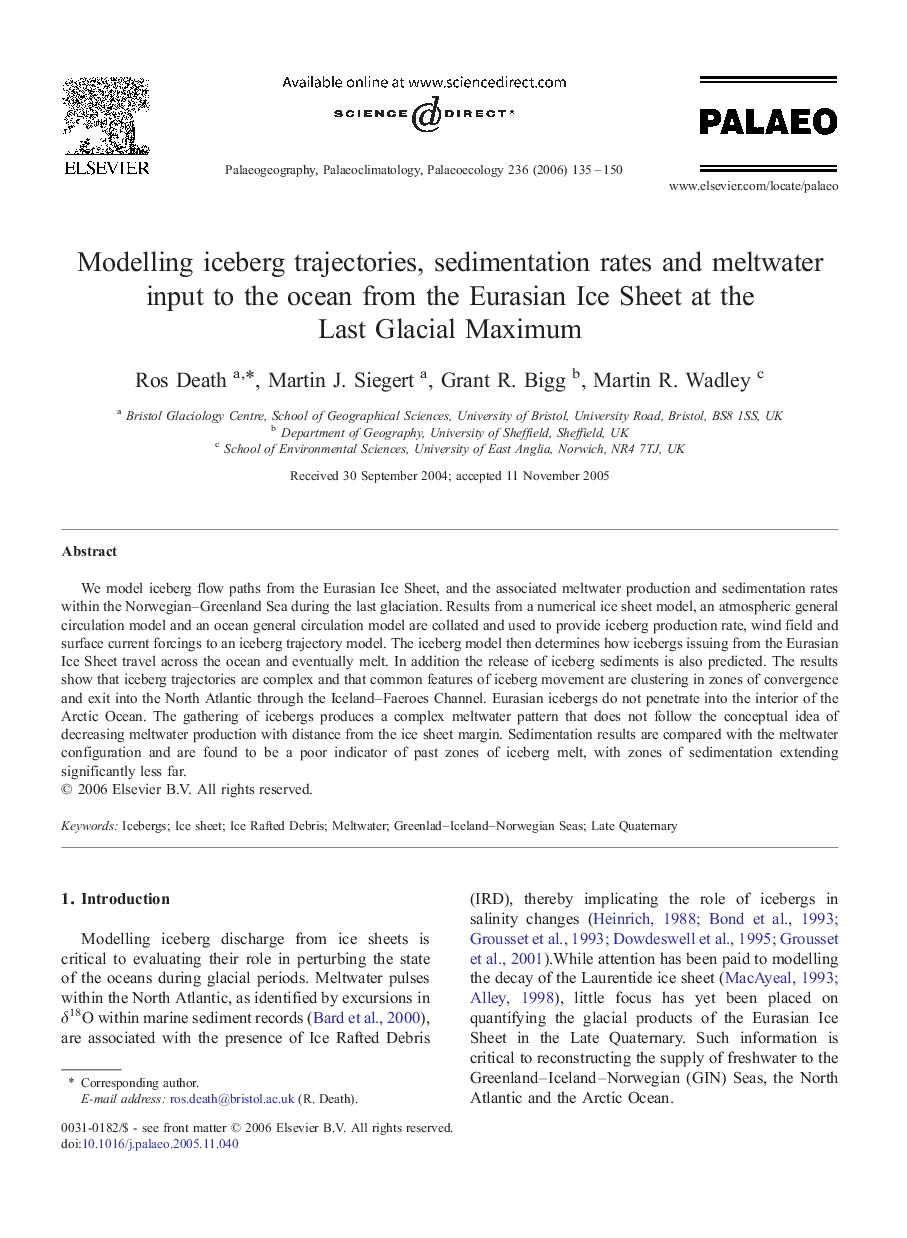| Article ID | Journal | Published Year | Pages | File Type |
|---|---|---|---|---|
| 4469378 | Palaeogeography, Palaeoclimatology, Palaeoecology | 2006 | 16 Pages |
We model iceberg flow paths from the Eurasian Ice Sheet, and the associated meltwater production and sedimentation rates within the Norwegian–Greenland Sea during the last glaciation. Results from a numerical ice sheet model, an atmospheric general circulation model and an ocean general circulation model are collated and used to provide iceberg production rate, wind field and surface current forcings to an iceberg trajectory model. The iceberg model then determines how icebergs issuing from the Eurasian Ice Sheet travel across the ocean and eventually melt. In addition the release of iceberg sediments is also predicted. The results show that iceberg trajectories are complex and that common features of iceberg movement are clustering in zones of convergence and exit into the North Atlantic through the Iceland–Faeroes Channel. Eurasian icebergs do not penetrate into the interior of the Arctic Ocean. The gathering of icebergs produces a complex meltwater pattern that does not follow the conceptual idea of decreasing meltwater production with distance from the ice sheet margin. Sedimentation results are compared with the meltwater configuration and are found to be a poor indicator of past zones of iceberg melt, with zones of sedimentation extending significantly less far.
